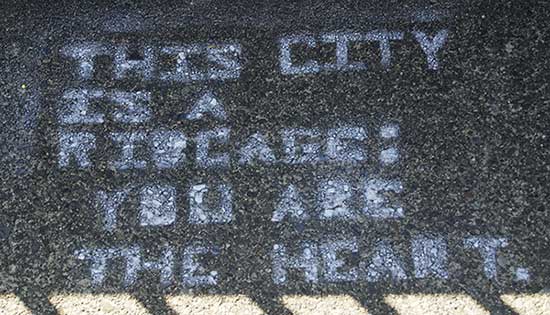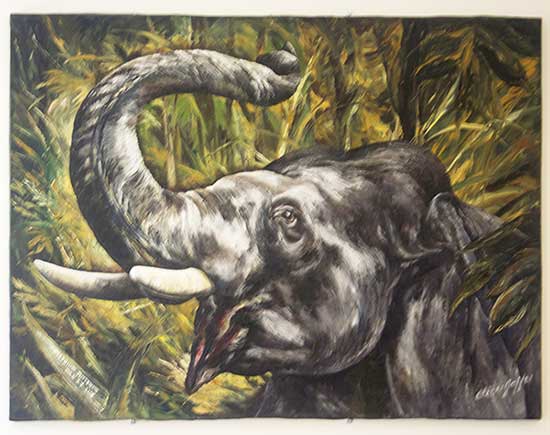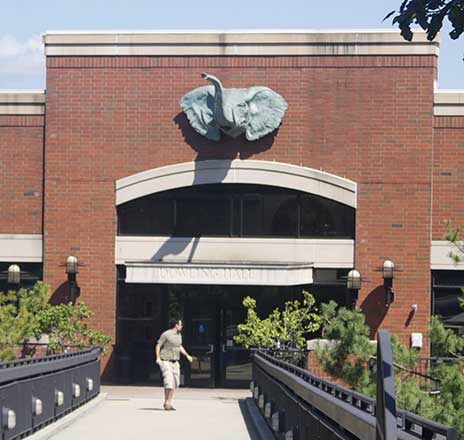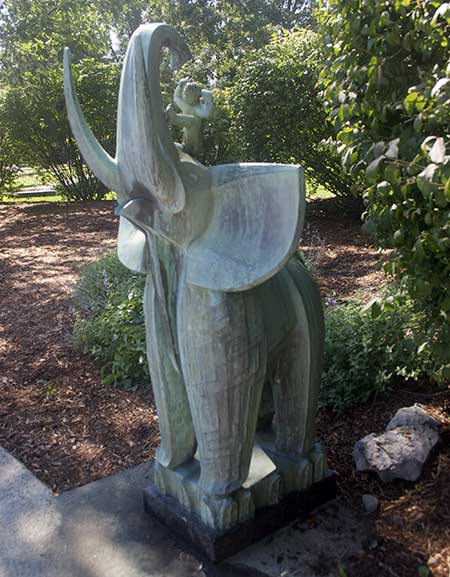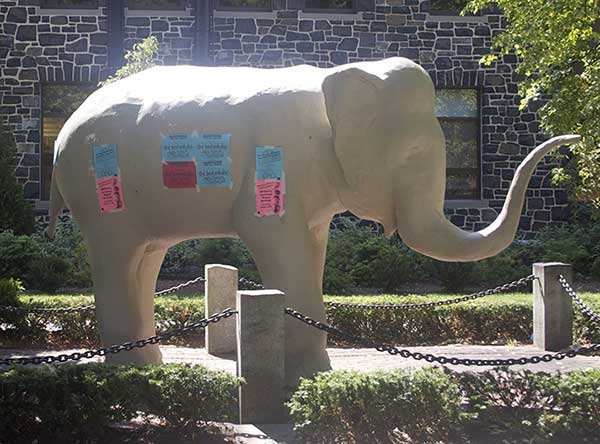So it came to pass that on Labor Day, or Labour Day in the modern language of Canada, zaiah and I ventured to take a train ride up to the frozen wilds of our northern neighbor to visit her.
I was not quite sure what to expect. I’ve heard the stories, of course: fierce raiders riding armored polar bears, carrying evil spears fashioned from ice; the great floating cities in the clouds, their perimeters patrolled by armed police riding the backs of furred, horned wyverns; the enormous, heavy tomes, their pages made of thin sheets of iron hammered from fallen meteorites, containing all the wisdom of the Elders in the nearly-forgotten language of the ancients. But I’d never seen any of these wonders with my own eyes, so it was with both fear and excitement I boarded the train, carefully stowing my borrowed polar bear saddle above the seat.
We arrived in the Wildlands in due course, bourne there by the great machine of iron and thunder, and within minutes of setting foot on Canadian soil our problems began.
 Those of you familiar with the writings of your humble scribe are no doubt aware that I am often prone to wearing bunny ears in public. This is a not-atypical photograph, showing me in my everyday, about-town ears, which are equally at home during a formal evening in a fancy pub or while traveling the rugged, rocky slopes of America’s midwest.
Those of you familiar with the writings of your humble scribe are no doubt aware that I am often prone to wearing bunny ears in public. This is a not-atypical photograph, showing me in my everyday, about-town ears, which are equally at home during a formal evening in a fancy pub or while traveling the rugged, rocky slopes of America’s midwest.
So it will be no surprise to many of you that I was wearing bunny ears–indeed, these very same bunny ears–on the trip up to the frozen north.
Canadian customs officials, whose numbers today are carefully selected from the most savage of the Kurgan raiders (about whom I shall speak more later), with only those who best their competitors in savage hand-to-hand combat too terrible to write about here allowed to win the honor of protecting the border from their unkempt southern neighbors, were not amused by the ears.
Not at all.
I was questioned about them, at great length and by at least three different people, before zaiah and I were taken into a small room for additional screening.
Now, I am loathe to go to the hardware store, much less to a strange and distant land, without my bunny ears. The story of the ears is too long to recount here, though I will try to sum it up without too much damage to this narrative. The ears are a gift, or perhaps an inheritence, from my London sweetie emanix, who I met while standing in line waiting for an elevator (or as they say in the native British tongue, a “lift queue”) at a convention of perverts, sodomites, and other fine folks. She was, as regular readers will recall, dressed as an Easter bunny and passing out candy at the time. Since strangers have the best candy, I immediately accepted her offer. Fast forward a few years, a couple trips abroad, and an orgy in a castle in the south of France, and the torch has well and truly been passed. So to speak.
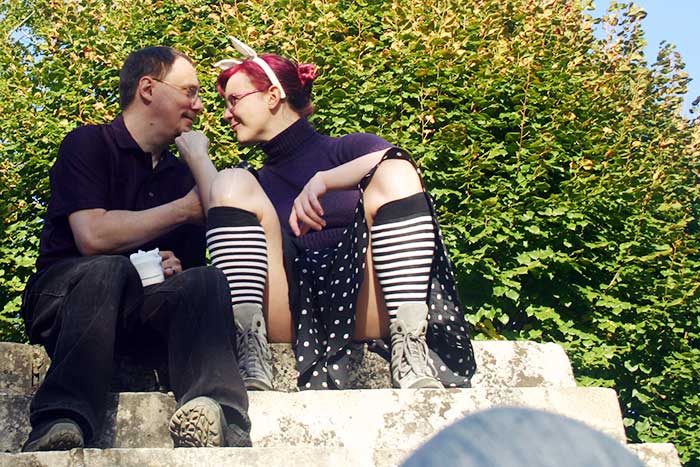 The source of my woes
The source of my woesAnyway, there we sat, just moments from disembarkation, sitting in a small room under the cold and watchful eyes of three people in bulletproof vests, who grilled us both about our motivations for making the long and dangerous trek into the icy plains of Canada with bunny ears. They demanded a list of every place I had lived for the past twenty years, whereupon they announced they would do a background check on me in all of them.
During this time, the lovely Eve, the namesake of the woman who chose knowledge over obedience, sat (or, rather, stood) outside the gate waiting. I was forbidden, in the strictest possible terms, to make any attempt to contact her, or in fact to use my cell phone at all.
Eventually, and grudgingly, they let us through. The entire ordeal took even longer than the unfortunate time I made the mistake of telling a British customs officer I was traveling to the UK to visit my girlfriend, which is, apparently, right up there with “I just came back from Columbia with thirty-seven kilos of the finest diamond-grade Bolivian blow ever to choke an elephant” and “I will avenge my people!” on the list of Things You Never Tell A Customs Agent. But I digress.
Customs behind us, we passed through the great hall into the lands of Canada, where I stood blinking, bag in one hand and bear saddle in the other, looking for our transport.
The saddle turned out to be unnecessary, as it appeared Vancouver was a Cosmopolitan enough city to have heard about and embraced the wonders of internal combustion. We loaded up into a Honda of some description or another–or perhaps it was a Toyota–and made our way past the barges laden with animal pelts and the street vendors hawking rhubarbs and small cursed figurines with glittering ruby eyes toward the home of someone who had graciously offered to accommodate us during our travels. (It turns out, in a strange twist of the-world-is-smaller-than-you-know, that her friends were companions of a woman I met in London at emanix‘s birthday party. The world is small, and strange, and really quite amazing.)
 The next morning, we rose to brave the twisted ways of the Vancouver public transit system.
The next morning, we rose to brave the twisted ways of the Vancouver public transit system.
Now, I have used public transit in at least five countries. I have ridden a streetcar in Poland that was ancient before the sun was born. I have navigated London’s tube and lived to tell the tale, thanks to the warning to mind the gap. But I was not quite ready for what we discovered when we boarded the bus in Vancouver.
Vancouver’s public transit drivers, like Canada’s customs agents, are drawn by and large from the ranks of disaffected Kurgan tribesmen, unsatisfied with the raider’s life, which leaves too little opportunity to wreak violence upon the rest of Canada’s people. Those who fail to win the coveted spots at the border crossings often become bus drivers, where they greet requests for navigational aid or questions about the fare with the traditional cry “Hark’on dûl goth Khan dok’tôl Akan gol’Kosh Trk’han,” which translates roughly as “With my ax I shall destroy all that you love.” The bus drivers of the greater metro area belong to many different clans, which wage ceaseless war with one another in the dead of night along lonely, deserted streets while the city sleeps.
We learned from an unfortunate fellow passenger to stand quietly and pay attention, leaping from the bus as it crossed the intersection where directions, scribbled in strange glyphs on a large sheet of runed paper called a “map,” instructed us to depart.
We stopped at a charming cafe to collect lunch, then walked to Canada Place to sit beneath the sun and eat. The view from our benches was quite spectacular, with the banner of Canada’s dominant tribe fluttering gaily in the breeze:

There is a secret horror lurking in the design of Canada Place, a grim reminder of an ancient evil, which I will get to in a moment.
Our repast complete, we journeyed forth once more to visit Vancouver’s Police Museum, an excellent place for zaiah and I to amuse ourselves with tales of law enforcement throughout the ages .
The history of law enforcement is the history of weaponry. So it is probably no surprise that the most interesting part of the Vancouver Police Museum, by far, is its weapons room, entry into which is permitted only under escort through a large, locked steel door.
There is also, in another, much larger part of the building, a display of improvised and more exotic weaponry, most of which is made up of all manner of strange and lethal variations on the theme of “I will hit you with this until you die.” There were handmade spears, and flails, and whips, and a spring steel cobra (a fine weapon I was introduced to by a friend of mine in my misspent college days); blowguns, and shivs, and butterfly knives; brass knuckles, and clubs, and axes with curved handles. It was an inspiring display, which made me long to disappear into my workshop for a few days and come out with a doomsday weapon that I could use to hold the moon for ransom. Ah, those glorious days of my youth…but again, I digress.
In front of the museum is a rather…peculiar statue, commemorating the pledge made by Canada’s law enforcement officers to be the friends of small, strangely-proportioned, bipedal space aliens with oddly-configured heads and tiny hands whenever they might be in need:
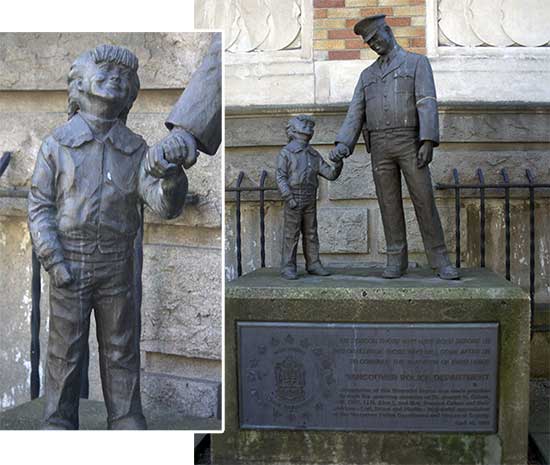 Vancouver’s finest, known throughout galactic sector R-4 as a friend of any being in need
Vancouver’s finest, known throughout galactic sector R-4 as a friend of any being in needRumo(u)r has it that a pod person once saved the police commissioner’s life, during a massive and unlikely conspiracy involving time travel and wildly improbable space aliens who look like crosses between sentient ivy and lingerie models. The next Men in Black movie will reportedly be based loosely on this story.
Our visit done, and reluctant to board a bus again, zaiah and I chose instead to walk the streets of the city, to better learn her customs and culture. Our wanderings brought us over a grand, soaring bridge, where we found this message spray-painted on the pavement, a chilling reminder of the Kurgan raiders who to this day live deep in the Wilds and stage occasional incursions into the civilized parts of the country.
Through messages like this, they seek to remind Canada’s citizens of their grisly practices of ripping the hearts from the chests of their enemies, lest the citizens become too complacent.
On the other side of the bridge, we spied the stylized peaks of Canada Place from the other side.
There are few alive today who remember the days of old, when Canada was known mainly for her hordes of ravening wildmen, who set sail in small, fast warships to plunder up and down the Western coast of the United States in search of treasure and women.
Though the design of this building seems innocent to modern eyes, there was a time when the sight of peaked sails just like these, traveling from over the horizon, would strike terror in people for hundreds of miles along the coast, as they signaled another assault from the Canadian longboatmen. This is why to this day nearly every city on the Western seaboard is still surrounded by tall, thick stone walls, with peaked watchtowers along the coastal side. Once, those towers were practical rather than ornamental; from them, watchers would stand guard, day and night, endlessly scanning the ocean for the first sign of those curved white sails, ready to sound the alarm that would bring men and boys rushing to arms to try, hopeless as it might be, to repel the invaders.
There are few who still remember; today these peaks do not bring the terror they once did. But I will confess, Gentle Readers, that when I saw the building, there across that narrow inlet of water as we crested the bridge, a chill crossed over my heart. It was soon gone; I know, in the rational part of my brain, that there is no longer any reason to fear that Canada will return to her warlike ways. But perhaps that fear has passed into the collective unconscious, a faint echo in our DNA of the trials we once faced from the rampaging northmen of the sea.
We faced a different trial on our way back from this place, one born of dangers subterranean rather than seafaring. But that part of my tale will have to wait until next time.
Like this:
Like Loading...















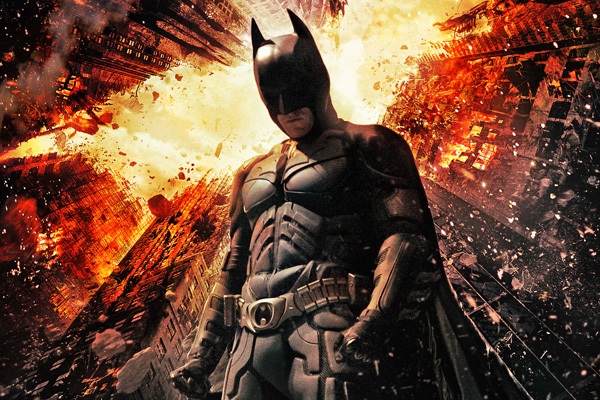


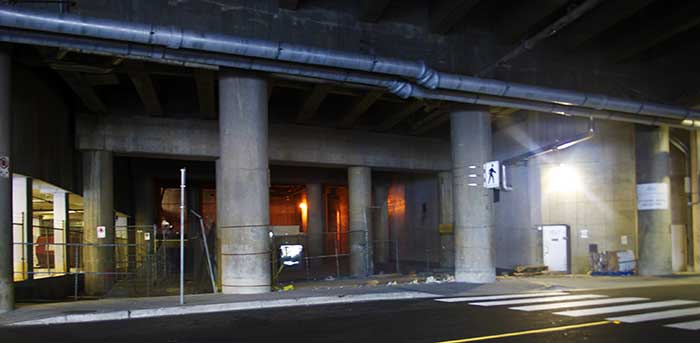
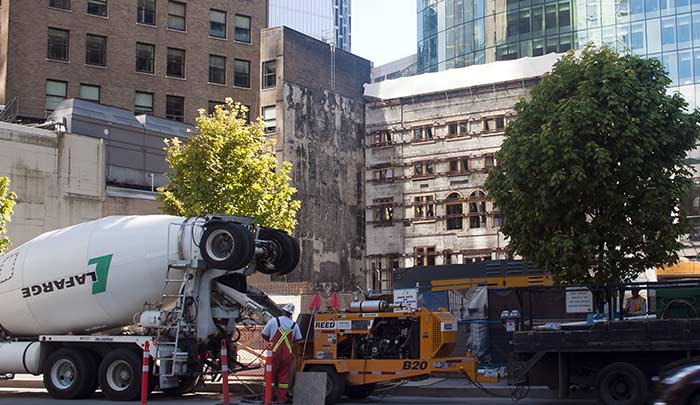


 We negotiated an exchange of currency with a man wearing an “Obey” T-shirt, and set off.
We negotiated an exchange of currency with a man wearing an “Obey” T-shirt, and set off.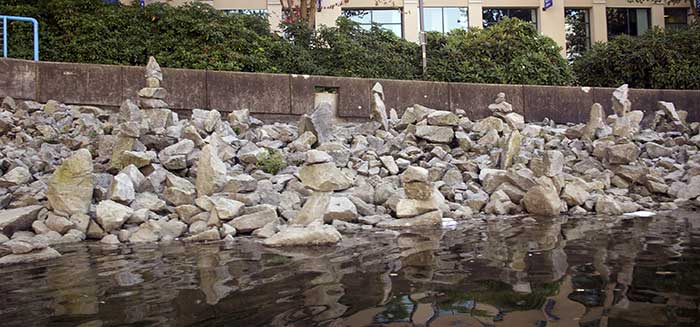
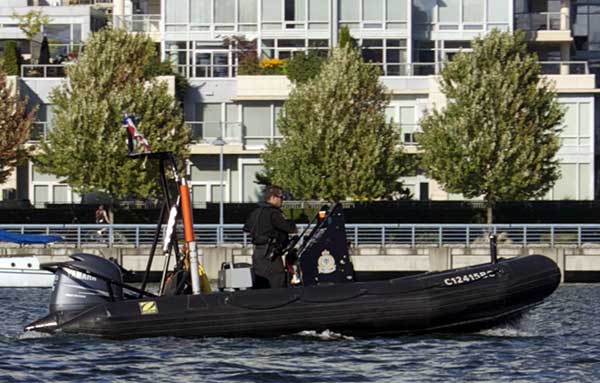
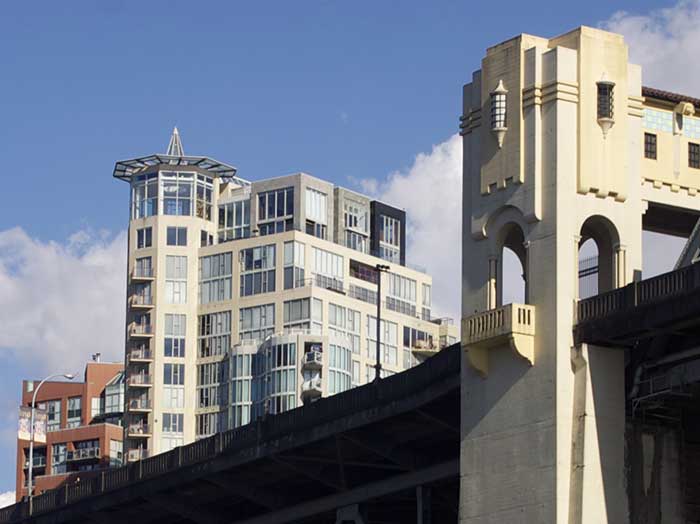


 Those of you familiar with the writings of your humble scribe are no doubt aware that I am often prone to wearing bunny ears in public. This is a not-atypical photograph, showing me in my everyday, about-town ears, which are equally at home during a formal evening in a fancy pub or while traveling the rugged, rocky slopes of America’s midwest.
Those of you familiar with the writings of your humble scribe are no doubt aware that I am often prone to wearing bunny ears in public. This is a not-atypical photograph, showing me in my everyday, about-town ears, which are equally at home during a formal evening in a fancy pub or while traveling the rugged, rocky slopes of America’s midwest.
 The next morning, we rose to brave the twisted ways of the Vancouver public transit system.
The next morning, we rose to brave the twisted ways of the Vancouver public transit system.

